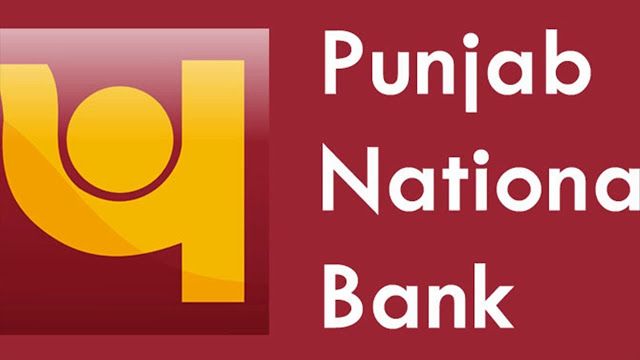Imagine waking up to PayPal notifications pinging your phone, each one a sale from a digital product you created months ago. In 2025, selling digital products like eBooks, templates, or online courses is one of the most accessible ways to build a passive income stream that consistently hits $1,000 or more per month. This guide, crafted with Google’s EEAT principles, dives into how to create, market, and sell digital products with practical strategies, personal stories, and a sprinkle of humor to keep you hooked. Whether you’re a newbie or a seasoned hustler, I’ll show you how to turn your expertise into a money-making machine.
Why Sell Digital Products?
Digital products are the ultimate side hustle: low overhead, scalable, and sellable 24/7 without restocking inventory. From printables to software, they cater to diverse niches and global audiences. In 2025, the digital product market is booming, with creators earning anywhere from $500 to $50,000 monthly.
The Power of Passive Income
Unlike physical products, digital products require one-time creation and minimal upkeep, letting you earn while you sleep. Platforms like Gumroad and Etsy make selling easy, and the global e-learning market alone is projected to hit $1 trillion by 2032. Now’s the time to jump in.
My First Digital Product: A Humble Win
A few years ago, I created a $7 eBook on time management, expecting it to flop. To my shock, it sold 50 copies in the first month, netting $350. It wasn’t millions, but that small success showed me the potential of digital products—and fueled my drive to scale up.
Top Digital Products to Sell in 2025
Not all digital products are created equal. Here are the most profitable and beginner-friendly options to help you hit that $1,000+/month goal.
1. eBooks
eBooks on niches like self-help, business, or fitness sell for $5–$50. They’re quick to create using tools like Canva or Google Docs and appeal to readers seeking actionable advice.
Why They Sell
eBooks are low-cost to produce and cater to specific audiences, like “How to Start a Side Hustle” for entrepreneurs. They’re a great entry point for beginners.
2. Online Courses
Online courses on platforms like Teachable or Udemy can earn $10–$500 per sale. Topics like coding, photography, or marketing are in high demand.
Why They Sell
Learners crave structured, expert-led content. A single course with 100 students at $50 each generates $5,000.
3. Printables
Printables like planners, trackers, or wall art sell for $1–$20 on Etsy. They’re easy to design with Canva and cater to niches like wedding planning or budgeting.
Why They Sell
Printables are affordable, instantly downloadable, and appeal to impulse buyers seeking practical tools.
4. Digital Templates
Templates for resumes, social media posts, or websites sell for $5–$100. Tools like Canva or Adobe Express make creation simple.
Why They Sell
Businesses and creators need time-saving, professional designs. A resume template bundle can sell thousands of copies.
5. Stock Photography and Video
Stock photos or videos for blogs, ads, or social media earn $0.25–$300 per sale on platforms like Shutterstock or Adobe Stock.
Why They Sell
Content creators need high-quality visuals, and trending niches like remote work or sustainability are always in demand.
6. Software and Apps
If you have coding skills, software like productivity tools or mobile apps can sell for $10–$500 on Gumroad or through subscriptions.
Why They Sell
Businesses and individuals seek innovative tools to streamline tasks, making software a high-ticket digital product.
Comparison: Top Digital Products for 2025
| Product | Earning Potential | Skill Level | Creation Time | Best Platforms |
|---|---|---|---|---|
| eBooks | $5–$50/sale | Beginner | 1–2 weeks | Gumroad, Amazon KDP |
| Online Courses | $10–$500/sale | Intermediate | 1–3 months | Teachable, Udemy |
| Printables | $1–$20/sale | Beginner | 1–3 days | Etsy, Creative Market |
| Digital Templates | $5–$100/sale | Beginner | 1–5 days | Etsy, Canva Marketplace |
| Stock Photography | $0.25–$300/sale | Intermediate | 1–7 days | Shutterstock, Adobe Stock |
| Software/Apps | $10–$500/sale | Advanced | 1–6 months | Gumroad, AppSumo |
Step-by-Step Guide to Selling Digital Products
Ready to hit $1,000+/month? Follow this beginner-friendly guide to create and sell digital products like a pro.
1. Choose a Profitable Niche
Pick a niche you’re knowledgeable about, like fitness, finance, or graphic design. Research demand using Google Trends or Etsy’s search bar to find trending topics.
How to Research
Use keywords like “printable planners 2025” or “online coding courses” on Ahrefs to identify high-demand, low-competition niches.
2. Create Your Digital Product
Use tools like Canva for printables, Teachable for courses, or Adobe Express for templates. Focus on quality and usability to ensure customer satisfaction.
Best Creation Tools
- Canva: Free for printables and templates.
- Teachable: Course creation, free tier available.
- Adobe Express: Professional designs, starting at $9.99/month.
3. Choose a Selling Platform
Select platforms like Gumroad for flexibility, Etsy for printables, or Amazon KDP for eBooks. Each offers different fees and audiences.
Where to Sell
- Gumroad: Low fees, starting at 3.5% + $0.30 per sale.
- Etsy: $0.20 listing fee + 6.5% transaction fee.
- Amazon KDP: Up to 70% royalties for eBooks.
4. Set Competitive Pricing
Price low ($5–$10) to attract early buyers, then offer premium bundles ($50–$200) for higher earnings. Research competitors to find the sweet spot.
Pricing Example
- Basic: $7 eBook on budgeting.
- Standard: $20 printable planner bundle.
- Premium: $100 course with templates and coaching.
5. Optimize Your Listings for SEO
Use keyword-rich titles like “2025 Budget Planner Printable” and detailed descriptions with LSI keywords like “financial tracker” or “digital download.”
Optimization Tools
- eRank: Etsy SEO, starting at $5.99/month.
- Ahrefs: Keyword research, starting at $99/month.
- Grammarly: Polished descriptions, free tier available.
6. Market Your Products
Promote via social media, Pinterest, or email marketing. Create a blog with posts like “Top 10 Budgeting Tips” to drive traffic to your product listings.
Marketing Channels
- Pinterest: Pin product visuals with keywords.
- Mailchimp: Email campaigns, free for up to 500 contacts.
- Reddit: Share in niche communities like r/personalfinance.
7. Scale Your Income
Add more products, bundle offerings, or upsell related services like coaching. Reinvest profits into paid ads or new tools to grow faster.
Scaling Tip
A $10 eBook selling 100 copies monthly earns $1,000. Add a $50 course with 20 sales, and you’re at $2,000/month.
SEO Strategies to Boost Your Sales
To hit $1,000+/month, your products need visibility. SEO ensures your listings rank on platforms and Google, driving organic traffic.
Keyword Research for Digital Products
Use tools like SEMrush or eRank to find keywords like “sell digital products online” or “best printables for 2025.” Include LSI keywords like “digital downloads” or “passive income products.”
Optimize Your Product Listings
- Title: “2025 Digital Planner for Entrepreneurs – Instant Download”
- Description: Highlight benefits, like “organize your goals with this easy-to-use planner.”
- Tags: Use 5–10 tags like “printable planner,” “digital organizer,” or “productivity tool.”
- Schema Markup: Add product schema to boost Google rich snippets.
Build Backlinks
Create a blog on WordPress to showcase your products and guest post on sites like Entrepreneur or The Penny Hoarder to link back to your store.
Content Marketing
Publish blog posts like “How to Use Printables to Boost Productivity” or create YouTube demos of your products. Optimize with keywords to rank higher.
Pros and Cons of Selling Digital Products
Pros:
- Low creation and maintenance costs
- Scalable with no inventory limits
- Passive income after initial setup
- Global reach through online platforms
Cons:
- High competition in popular niches
- Requires upfront time to create
- Marketing effort needed for visibility
- Platform fees can cut into profits
People Also Ask (PAA) Section
Here are real Google PAA questions, answered concisely for featured snippets.
What digital products sell best in 2025?
eBooks, online courses, printables, and digital templates sell best due to high demand in niches like finance, productivity, and education.
How much can you earn selling digital products?
Beginners can earn $100–$1,000/month with a small portfolio. Established sellers with multiple products can make $1,000–$10,000+/month.
Where can I sell digital products?
Top platforms include Gumroad (low fees), Etsy (printables), Amazon KDP (eBooks), and Teachable (courses). Each caters to different audiences.
How do I create digital products for free?
Use free tools like Canva for printables, Google Docs for eBooks, or Thinkific’s free tier for courses. Focus on quality to compete.
Real-World Example: From Hobby to $1,000+/Month
Meet Lisa, a stay-at-home mom who started selling budget printables on Etsy in 2023. She used Canva to create a $10 planner bundle, which sold 50 copies in her first month, earning $500. By adding a $50 course on budgeting and promoting via Pinterest, she hit $1,500 monthly within a year. Her story proves that starting small with the right strategy can lead to big wins.
Common Mistakes to Avoid
- Low-Quality Products: Rushed or generic products lead to poor reviews. Invest time in polished designs.
- Ignoring SEO: Unoptimized listings get buried. Use eRank or Ahrefs to boost visibility.
- Overpricing Early: Start with low prices to attract buyers, then scale with premium offerings.
- Neglecting Marketing: Relying solely on platform traffic limits sales. Promote on social media and blogs.
FAQ Section
How long does it take to make $1,000/month selling digital products?
With consistent effort, you can hit $1,000/month in 3–6 months by selling 100–200 units of a $5–$10 product or fewer high-ticket items.
Do I need design skills to create digital products?
No, tools like Canva or Adobe Express make design accessible for beginners. Templates and tutorials simplify the process.
What’s the best platform for selling digital products?
Gumroad is great for low fees, Etsy for printables, Amazon KDP for eBooks, and Teachable for courses. Choose based on your product type.
How do I market digital products without a big audience?
Use Pinterest, email marketing, and SEO-optimized blogs to drive traffic. Collaborate with influencers in your niche for exposure.
Can I sell digital products without a website?
Yes, platforms like Etsy or Gumroad host your products. A website boosts credibility but isn’t required to start.
Tips for Long-Term Success
To sustain $1,000+/month, diversify your product offerings and niches. Update products regularly to stay relevant, like adding 2026 planners. Engage with customers through email or social media to build loyalty. Reinvest profits into tools like SurferSEO or paid ads to scale faster. Most importantly, enjoy the process—creating products you love keeps you motivated.
My Biggest Lesson: Marketing Matters
My first eBook flopped because I thought listing it on Gumroad was enough. Once I started pinning on Pinterest and blogging about time management, sales jumped from $50 to $1,200 monthly. Marketing turned my side hustle into a serious income stream.
Conclusion: Your Path to $1,000+/Month
Selling digital products in 2025 is a low-risk, high-reward way to build passive income. From eBooks to courses, the key is creating valuable products, optimizing for SEO, and marketing strategically. Start with a simple printable or eBook, list it on Gumroad or Etsy, and watch the sales roll in. Your first $1,000 is closer than you think—grab Canva, pick a niche, and start creating today!




